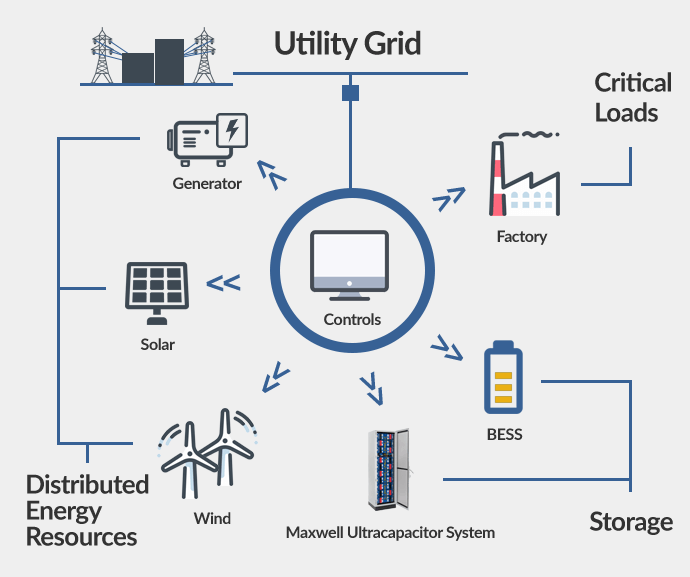Editor’s note: This article comes MaxPower Weekly, a blog from Maxwell Technologies. It is authored by Dr. Kim McGrath Ph.D., Sr. Director of Business Development & Technical Marketing.

Microgrids support resilience objectives by maintaining continuity of energy supply when primary sources are affected by natural or man-made disruptions and can ensure optimal integration of renewable energy sources while also providing backup power when utility power is unavailable. Learn more here.
Globally, grid modernization is driven by a number of factors including increased renewable energy generation and a decrease in generation from traditional fuels. Further energy generation is becoming more decentralized. The net result of these factors is less grid stability.
Ultracapacitors, also called supercapacitors, are rapid-response, high power energy storage devices that provide grid operators with a cost-effective strategy for addressing voltage, frequency, and power quality issues.
Here are five ways that ultracapacitors can operate in the modern grid.
1. Generator bridging, ramping and regulation
Power generators are typically on standby so that they can ramp up or down depending on the increases and decreases in demand. Ultracapacitor energy storage systems can help reduce the need for idling, fuel-burning generators by bridging the time gap between demand and bringing an alternative generation resource online as well as by providing active power support until the generation resource is brought to full power.
2. Primary frequency response
The modern grid needs new ways to achieve stability, as traditional generation sources, such as fossil fuel and nuclear plants, phase out. Renewables, including wind and solar, introduce unpredictable changes in power supply. Ultracapacitor energy storage systems address the fluctuations of renewable energy by rapidly injecting and absorbing power, helping to stabilize changes in frequency.
3. Voltage sag mitigation
Voltage sags, or a short-term dips in voltage, are one of the most expensive of all power quality issues. Ultracapacitors contribute to power quality by injecting power to support loads and mitigate the risk of downtime at critical facilities. When compared to batteries and flywheels, ultracapacitors have a smaller footprint and lower cost of ownership, with less maintenance required.
4. Mission critical microgrids and facilities
Microgrids exist on military bases, university campuses, commercial and industrial sites and areas isolated from the main power grid. Since microgrids are self-reliant, it is critical to maintain power quality and stability. Maxwell ultracapacitor systems can provide short-duration services such as voltage and frequency support, solar and wind firming, and generator bridging, and likewise be incorporated into hybrid ultracapacitor-battery systems to reduce the charge-discharge rate of batteries, helping to extend battery lifetime.
5. Solar and wind-power smoothing
When wind turbines have no wind to catch and solar panels have no sun to absorb, power availability dramatically decreases. Grid operators can use the high power and response speed of ultracapacitors to react to millisecond and second changes in power availability and “smooth” fluctuations caused by intermittent renewable energy sources.
Filed Under: Energy storage, News




